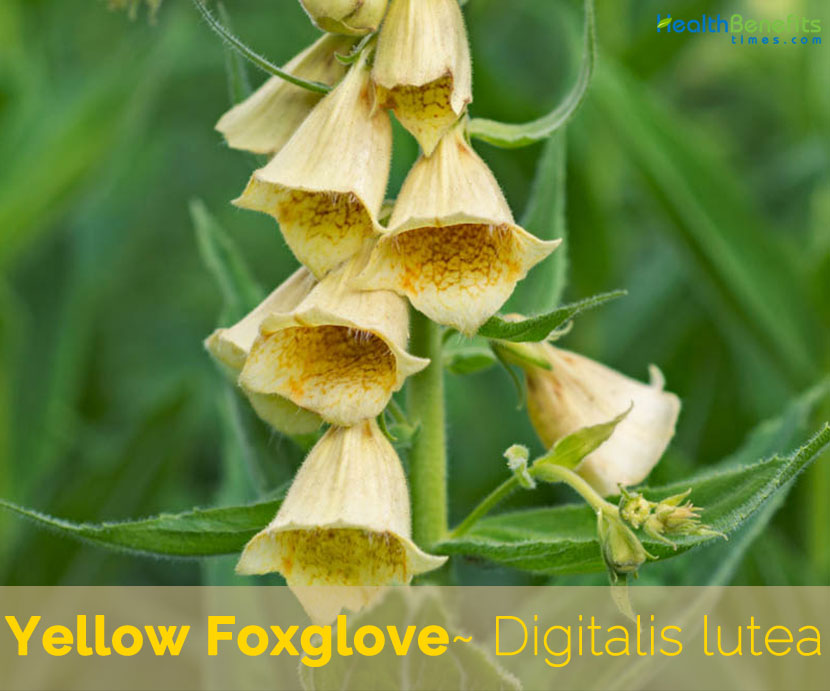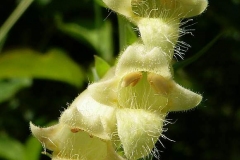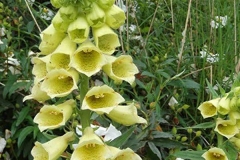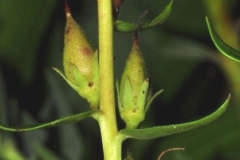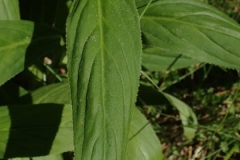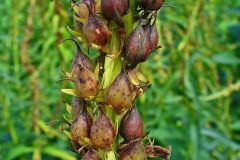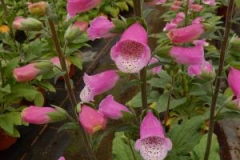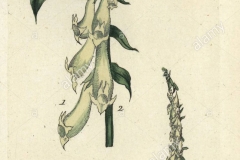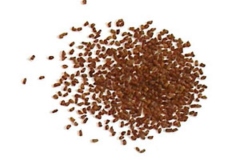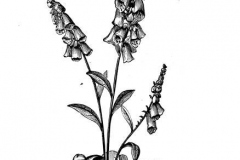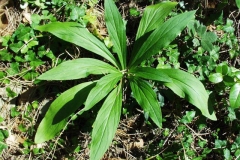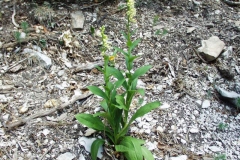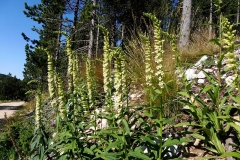| Yellow Foxglove Quick Facts | |
|---|---|
| Name: | Yellow Foxglove |
| Scientific Name: | Digitalis lutea |
| Origin | Western and southern Europe and North West Africa |
| Colors | Light green while young, but they become dark brown as they mature |
| Shapes | Ovoid seed capsules |
| Health benefits | Used in the treatment of a weakened or failing heart, increase the strength of contraction, slowing and steadying the heart rate and lower blood pressure |
| Name | Yellow Foxglove |
|---|---|
| Scientific Name | Digitalis lutea |
| Native | Western and southern Europe and North West Africa |
| Common Names | Straw Foxglove, Small yellow foxglove, yellow foxglove |
| Name in Other Languages | Albanian: Luletogëza e verdhë Arabic: qameiat safra ( قمعية صفراء) Catalan: Didalera groga, Digital groga, Didalera, Didalera de sant jeroni Croatian: Zuti naprstak Czech: Náprstník žlutý Danish: Gul fingerbøl Dutch: Geel vingerhoedskruid English: Straw Foxglove, Small yellow foxglove, yellow foxglove Estonian: Kollane sõrmkübar Finnish: Pikkusormustinkukka French: Digitale jaune, Digitale à petites fleurs, Petite digitale, digitale penchée German: Gelber Fingerhut, Kleiner Gelber Fingerhut Hungarian: Vajsárga gyűszűvirág, kisvirágú gyűszűvirág Italian: Digitale gialla piccolo, digitale gialla minore, erba aralda Japanese: Kibanajigitarisu (キバナジギタリス) Norwegian: Gul revebjelle Polish: Naparstnica żółta Russian: Naperstyanka zhëltaya (наперстянка жёлтая) Slovak: Náprstník žltý Spanish: Dedalera amarilla, dedalera de San Jerónimo, digital amarilla, Dedalera de San Jerónimo, Digital amarilla, calzas de lobo, digital blanca Swedish: Liten fingerborgsblomma Upper Sorbian: Žołty naporst Welsh: Bysedd-y-cŵn melyn |
| Plant Growth Habit | Clump-forming, short-lived, herbaceous, evergreen to semi-evergreen perennial or biennial plant |
| Growing Climates | Woodlands, hedgerows, uncultivated fields on siliceous soils, weedy meadows, overgrown thickets, disturbed open woodlands, upper slopes of wooded ravines, woodland glades, woodland margins and in grassland |
| Soil | Easily grown in average, medium moisture, well-drained soils in part shade. Prefers organically rich soils with consistent and regular moisture. Wet soils in winter can be fatal |
| Plant Size | 1 m (3.3 ft.) tall |
| Root | Taproot |
| Stem | Light to medium green central stem that is glabrous, terete, unbranched, and erect |
| Leaf | Dark green leaves are lanceolate with broadly serrate margins, are up to 25cm long, 6cm broad and spirally arranged |
| Flowering season | July |
| Flower | Yellow flowers are tubular, pendant up to 2cm long and arranged on a slender upright stalk |
| Fruit Shape & Size | Ovoid seed capsules |
| Fruit Color | Light green while they are immature, but they become dark brown and larger in size at maturity |
| Propagation | By reseeding |
| Plant Parts Used | Leaves |
| Other Facts |
|
Plant Description
Yellow Foxglove is a clump-forming, short-lived, herbaceous, and evergreen to semi-evergreen perennial or biennial plant that normally grows about 1 m (3.3 ft.) tall. The plant is found growing in woodlands, hedgerows, uncultivated fields on siliceous soils, weedy meadows, overgrown thickets, disturbed open woodlands, upper slopes of wooded ravines, woodland glades, and woodland margins and in grassland. It can be easily grown in average, medium moisture, well-drained soils in part shade. It prefers organically rich soils with consistent and regular moisture. Wet soils in winter can be fatal. The plant has taproot. Similarly the plant has light to medium green central stem that is glabrous, terete, unbranched, and erect.
Leaves
Along the stem, there are about 15-25 spreading alternate leaves. They are either sessile or clasp the stem at their bases. Individual leaves are 2½–6 inches long and ½–1¼ inches across. They are lanceolate-oblong to oblanceolate-oblong in shape and their margins have small widely-spaced teeth. The leaf surface is medium to dark green and usually glabrous, although fine hairs may occur along the veins of the leaf underside. Leaf tips are acute. Leaf venation is pinnate with a central vein and long outwardly curved lateral veins.
Flower
The central stem terminates in a spike-like raceme of flowers about ½–1½ feet long. Each raceme has 15-50 flowers that are arranged largely along one side. Each flower is about ¾ inches long, consisting of a pale yellow or cream-colored corolla that has a swollen tubular shape, a medium to dark green calyx with 5 recurved teeth, 4 stamens (2 shorter & 2 longer), and an ovary with a long style. The corolla is slightly compressed vertically and it is widest toward the outer-middle. The mouth of the corolla is surrounded by a pair of upper lobes, 2 lateral lobes, and a slightly larger lower lobe. These lobes are more or less deltate (triangular) in shape, moderately small in size, and spread away from the mouth; they are often white-hairy to a greater or less degree. On some flowers, the lower lobe may be divided into 2 smaller lower lobes. The corolla interior is either spotless or brown-spotted. The anthers are light brown to brown. The pedicels of the flowers are very short and somewhat stout. Solitary leafy bracts up to 1¼” long occur underneath the flowers; they are linear-lanceolate in shape. The blooming period occurs from late spring to mid-summer for about 3 weeks. The flowers may have a sweet fragrance.
Fruit
Later, the fertile flowers are replaced by ovoid seed capsules. These seed capsules are light green while they are immature, but they become dark brown and larger in size at maturity. The capsules eventually split open to release their seeds.
Traditional uses and benefits of Yellow Foxglove
- Yellow foxglove is little used in herbal medicine but is in fact a less toxic alternative to the purple and woolly foxgloves (D. purpurea and D. lanata) which are widely used in the treatment of heart complaints.
- The yellow foxglove has similar medical actions, but its alkaloids are more readily metabolized and flushed out of the body.
- The leaves are cardiac, strongly diuretic, stimulant and tonic.
- They are used in the treatment of a weakened or failing heart, increasing the strength of contraction, slowing and steadying the heart rate and lowering blood pressure by strongly stimulating the flow of urine – which reduces overall blood volume.
Precautions
- All parts of the plant are poisonous.
- The plant is less dangerous that the common foxglove (D. purpurea) since its effects is not cumulative.
- Excessive doses of yellow foxglove can prove fatal.
- This plant is subject to legal restrictions in some countries.
References:
https://www.itis.gov/servlet/SingleRpt/SingleRpt?search_topic=TSN&search_value=33584#null
https://pfaf.org/user/Plant.aspx?LatinName=Digitalis+lutea
https://www.cabi.org/isc/datasheet/113897
http://www.missouribotanicalgarden.org/PlantFinder/PlantFinderDetails.aspx?kempercode=c628
http://www.floracatalana.net/digitalis-lutea-l-subsp-lutea
https://plants.usda.gov/core/profile?symbol=DILU
http://luirig.altervista.org/schedenam/fnam.php?taxon=Digitalis+lutea
https://en.wikipedia.org/wiki/Digitalis_lutea
http://www.theplantlist.org/tpl1.1/record/kew-2768038
http://plantsoftheworldonline.org/taxon/urn:lsid:ipni.org:names:802039-1
https://gd.eppo.int/taxon/DIKLU
https://gobotany.nativeplanttrust.org/species/digitalis/lutea/
https://www.illinoiswildflowers.info/weeds/plants/str_foxglove.html


